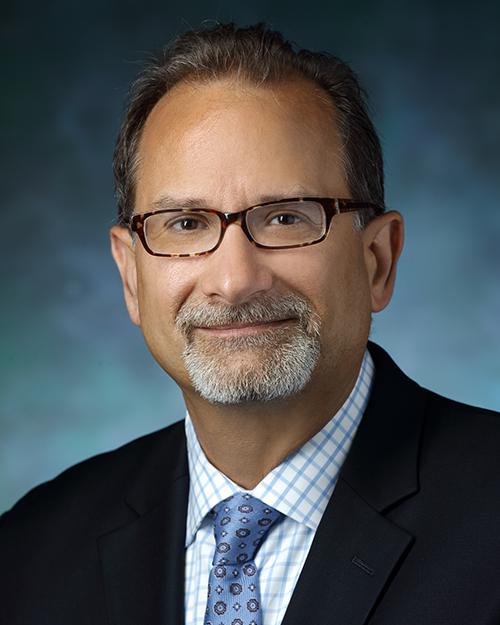Patient Story
A Dedicated Caretaker Reflects on Her Husband’s Alzheimer’s Disease

Story Highlights
- Kathy Siggins’ husband Gene was diagnosed with Alzheimer’s disease in July 1990 and saw Constantine Lyketsos, M.D. at Johns Hopkins in August, 1996, toward the end of his illness.
- Kathy provided care for Gene in their home for all but the last nine months of his 13-year battle.
- When Gene died, Kathy went to work with other Alzheimer’s advocates to create a fundraising stamp for Alzheimer’s disease.
Kathy Siggins remembers a day when she literally hit a wall.
She’d been caring for her husband, Gene, and trying to run her household more or less single-handedly since he was diagnosed with Alzheimer’s disease about two years earlier, in 1990.
She was lonely and felt isolated. The couple’s friends and Gene’s work buddies from the post office had stopped visiting — Kathy says they were devastated by how much the illness changed him.
Those changes made things hard for Kathy as well. The once vital man who handled the family finances, grocery shopping and driving was faltering, but his pride made it hard for him to accept help. “We were constantly at each other’s throats,” Kathy says.
One afternoon when she was overwhelmed by frustration and fatigue, Kathy was vacuuming and drove a hole in the drywall.
In that moment, Kathy says she turned a corner. She recalls, “I was crying uncontrollably. When I saw the hurt on Gene’s face as he was trying to comfort me, I realized he couldn’t help being the way he was. But I suddenly realized that I could.”
After that, she stopped arguing with Gene and accepted what was happening.
She got involved with the one support group available at the time. “Support groups are an important source of help,” Kathy says, “and there are so many more out there now, because of advocates, people like me who are working to make a difference.”
Alzheimer’s Treatment at Johns Hopkins
Kathy cared for Gene herself, in their home, for 12 years.
“In the beginning, we both felt anger and frustration,” Kathy says. But I reached a point of acceptance. Then, I understood my role was to care for him, to make sure he was clean, comfortable and safe.”
But as his symptoms worsened, she eventually realized she needed a doctor’s help. In August 1996, she brought Gene to see Johns Hopkins psychiatrist and dementia expert Constantine Lyketsos, M.D. Lyketsos directs the Johns Hopkins Memory and Alzheimer’s Treatment Center, which brings together experts in psychiatry, neurology and geriatric medicine to treat Alzheimer’s patients. The center offers a range of resources and guidance to caregivers and families as well.
Lyketsos says, “We have a very elaborate, structured approach to caring for patients and family members. We evaluate each caregiver’s knowledge about his or her loved one’s prognosis and treatment. In general, much of what we do is preparing the family members for the next step in the progression of their loved one’s dementia.
“We pay attention to where they are in transitioning from their former lives to the role of caregiver. Every time the patient comes in, the caregiver gets alone time with our clinicians. When necessary, we might refer them for additional medical or mental health care.”
Lyketsos recalls meeting Gene, and seeing that the Alzheimer’s disease was at an advanced stage. Gene’s health deteriorated. He experienced seizures. Lyketsos did all he could to address Gene’s symptoms, but he, his team and the Siggins family understood the reality of the disease.
“Gene suffered a seizure early on the morning of my 50th birthday,” Kathy says. “He never came home. I hadn’t known that seizures are a part of Alzheimer’s disease.”
While at Gene’s bedside with her family in 1999 during his last days, Kathy says she felt very clearly that this wasn’t the end.
“I knew there was a reason why God had taken us on this journey,” she says, “and that it wasn’t supposed to die with Gene.”
Much of what we do is preparing the family members for the next step in the progression of their loved one’s dementia.
Constantine Lyketsos, M.D.
Grief, Then Inspiration
Lyketsos says the reaction of spouses, partners and other family members to the death of their loved ones after long years of caretaking can be complex. “There’s a mixture of grief, pain, depression and guilt. Also, with dementia, there’s grief before the actual death as the person loses memories and independence — a loss before the loss.”
Though the Memory and Alzheimer’s Treatment Center offers grief support for surviving caregivers, Lyketsos notes that most end up going elsewhere for support. “Choosing a new setting for grief counseling may help surviving family members find closure,” he says.
As for her grieving, Kathy says, “I stayed busy, doing more advocacy. At a caregivers’ forum in Hagerstown the August after Gene died, we were talking about fundraising and awareness. Someone mentioned the breast cancer stamp that had been issued by the U.S. Postal Service in 1998.”
Kathy was inspired — a stamp honoring Gene and other people affected by Alzheimer’s disease would be a fitting tribute. She and Gene had met at the headquarters of the Postal Service in Washington, D.C.
“I decided I wanted [a stamp] for Alzheimer’s disease,” she says. So, in 2000 Kathy wrote to the Citizen’s Stamp Advisory Committee and started the process. At first, she was alone. “Through the years, I continued to pick up more support from members of Congress and advocates,” Siggins says. “In 2012, I joined forces with Lynda Everman, who had recently lost her husband, and she was excellent with social media, which helped our cause.”
But it wasn’t until after 17 years of letter writing, talking to reporters and petition collecting that Kathy got the phone call: A semipostal, or fundraising, stamp would be released in time for that year’s national Alzheimer’s Awareness Month.
“By then, a lot of the people who signed the petition for the stamp were no longer here,” she says. “The victory, as late as it was, was bittersweet. I remember thinking after the stamp dedication, ‘Did I do that?’”
Honoring Alzheimer’s Patients and Their Families
 “Proceeds from the sale of the Alzheimer’s stamp go toward the National Institutes of Health for Alzheimer’s research. They are voluntarily purchased by citizens, including loved ones of people with Alzheimer’s disease,” Kathy explains.
“Proceeds from the sale of the Alzheimer’s stamp go toward the National Institutes of Health for Alzheimer’s research. They are voluntarily purchased by citizens, including loved ones of people with Alzheimer’s disease,” Kathy explains.
“Even if someone isn’t able to leave the house while they’re caring for someone with Alzheimer’s, buying the stamp gives them power to contribute directly to research.”
The Alzheimer’s disease semipostal stamp’s circulation is due to end Nov. 30, 2019. Kathy, Lynda Everman and their fellow advocates are working with legislators and others to extend the circulation period. On June 5, 2019, the U.S. House of Representatives and Senate introduced legislation calling for the stamp’s circulation to continue for six more years.
But already, the stamp has raised more than $915,000 for Alzheimer’s disease research. It’s easy to imagine that Gene Siggins would be proud.
Kathy has been inducted into the Maryland Senior Citizens’ Hall of Fame for her volunteer efforts in 2019. This year, she plans to participate in her 26th Walk to End Alzheimer’s event. Her team has already raised close to $112,000 for families, support groups, seminars, assessments, safe return and medical alert programs.
“The walk raises money that provides a lot of services that weren’t available when Gene was ill,” Kathy says.
Meet Mr. Siggins' Provider
At Johns Hopkins, a collaboration of experts in psychiatry, neurology and geriatric medicine evaluates patients with a range of conditions affecting cognition and memory. Visit the Memory and Alzheimer’s Treatment Center.





